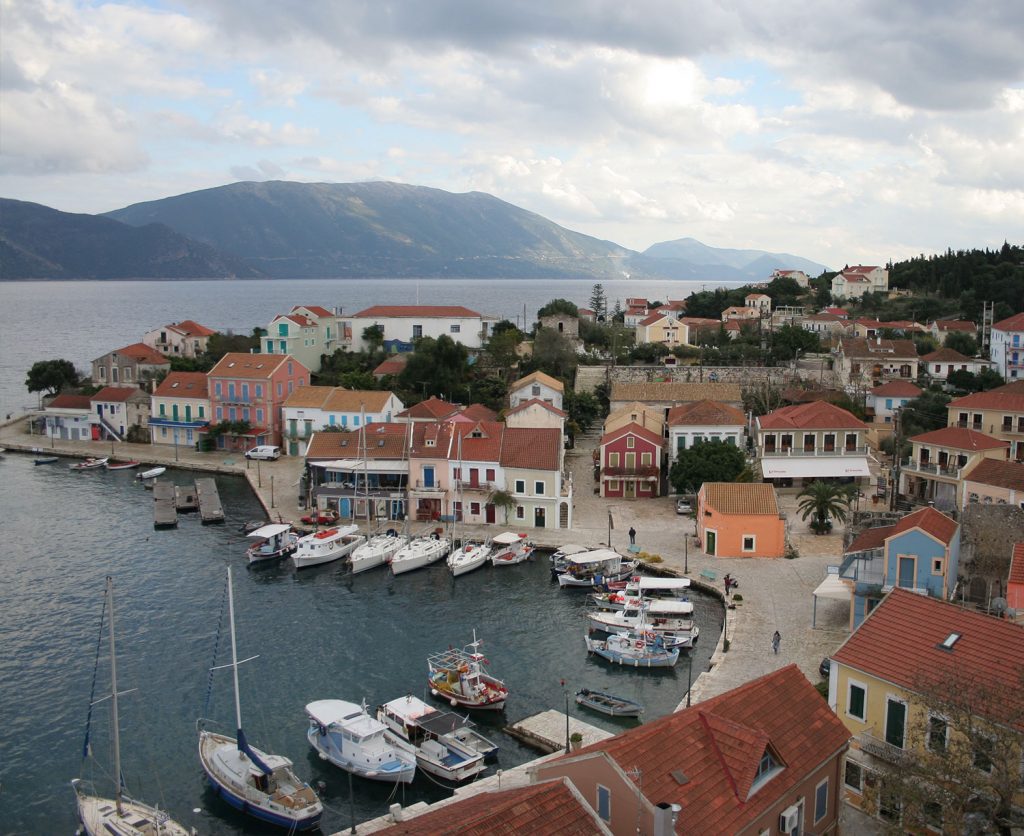The traditional town of Fiscardo in the natural bay, in which the city of Panormos had developed.

The traditional town of Fiscardo in the natural bay, in which the city of Panormos had developed.
istorika_panormos_1
The city of Panormos was founded at the north end of Cephalonia, on the peninsula of Erisos, opposite Ithaca and very close to Leukas, in a small, natural bay, today hosting modern Fiscardo:«καὶ ὁ Ἐφέσιος Ἀρτεμίδωρος ἐν τῷ πέμπτῳ τῆς εἰς ἕνδεκα συνηγμένης αὐτῷ πραγματείας γράφει ταῦτα· τῆς Κεφαλληνίας ἀπὸ Πανόρμου λιμένος πρὸςἀνατολὴνἀπέχουσα δώδεκα στάδια νῆσόςἐστινἸθάκη» (Porfyrios 4).
The city’s port, protected by the Fournias peninsula, was a safe mooring station for ships on their trip towards Greece or to the West, and thus it was an ideal place for a city largely based on trade to develop. “Λιμενοσκόπος Φοίβος”, i.e. Apollo, protected the city. A city sanctuary would have been devoted to him, as it was customary for cities lying in wind-protected bays to be related to the worship of this god. «Φοῖβε, Κεφαλλήνωνλιμενοσκόπε, θῖνα Πανόρμου ναίων, τρηχείηςἀντιπέρηνἸθάκης»(Αντίπατρος Θεσ. Ανθ. Παλ. Χ. 25).
The centre of the city, which has produced remains of Roman and Late Roman date, was located in the centre of today’s Fiscardo, at the site of Tigania. The agora was discovered here. The discovery of a pedestal-base of a statue which adorned the square and had been devoted by the Panormites to a benefactor has confirmed the identification of the ancient city of Panormos with today’s traditional village.
Research in the area has revealed monuments of architectural types testifying to influences from well-known, major centres of Greece and Italy, as is also the case in Same. A small theatrical structure lying very close to the agora is one of the city’s most important monuments. Mausolea also stand out as monuments reflecting their owners’ need to promote themselves and to retain their reputation after death.
In early Byzantine times, the city continued to flourish, as indicated by the construction of a monumental basilica on the Fournias peninsula. The city lost its past glory and shrank since the end of that same period onwards. The latest appearance of the name of Panormos dates to 1264, when it was mentioned in the proceedings of the Latin Diocese. The town’s modern name is thought to be a corruption of the name of the Norman king Robert Guiscard, who died in 1084 in the area, on his way to help the Normans in their attempt to conquer the island. The traditional town of Fiscardo developed at the site of the ancient city since the end of the 18th century. This town is today the most significant example of Cephalonia’s architecture as it was before the destructive earthquakes of 1953.